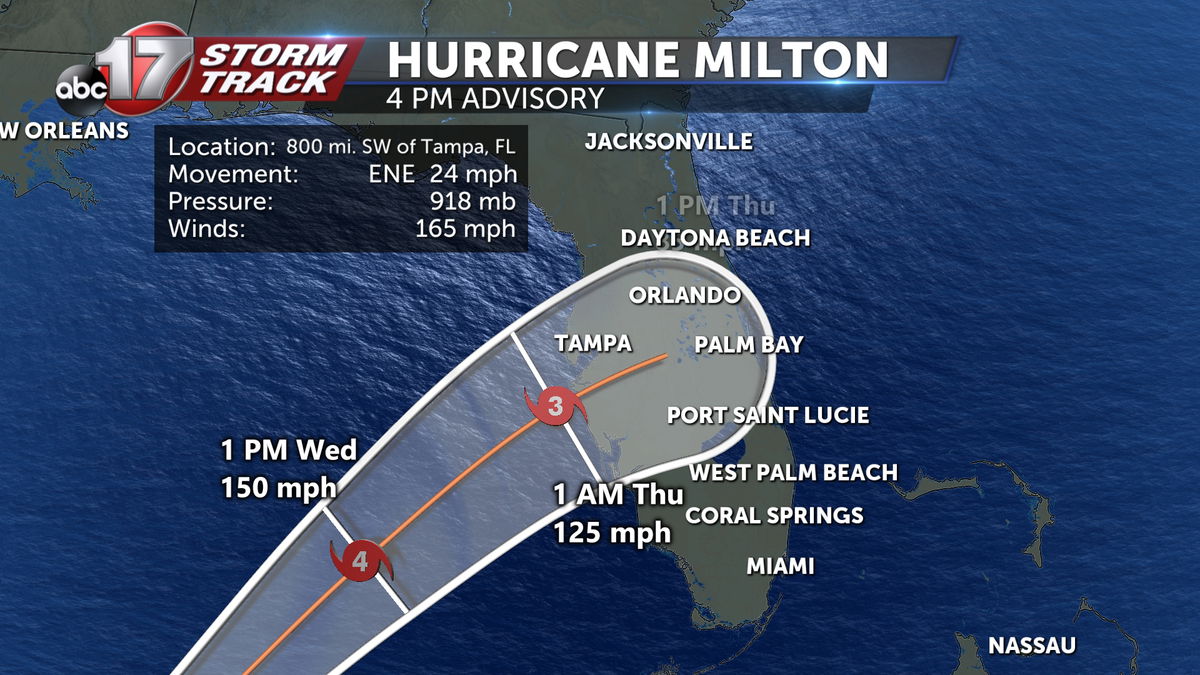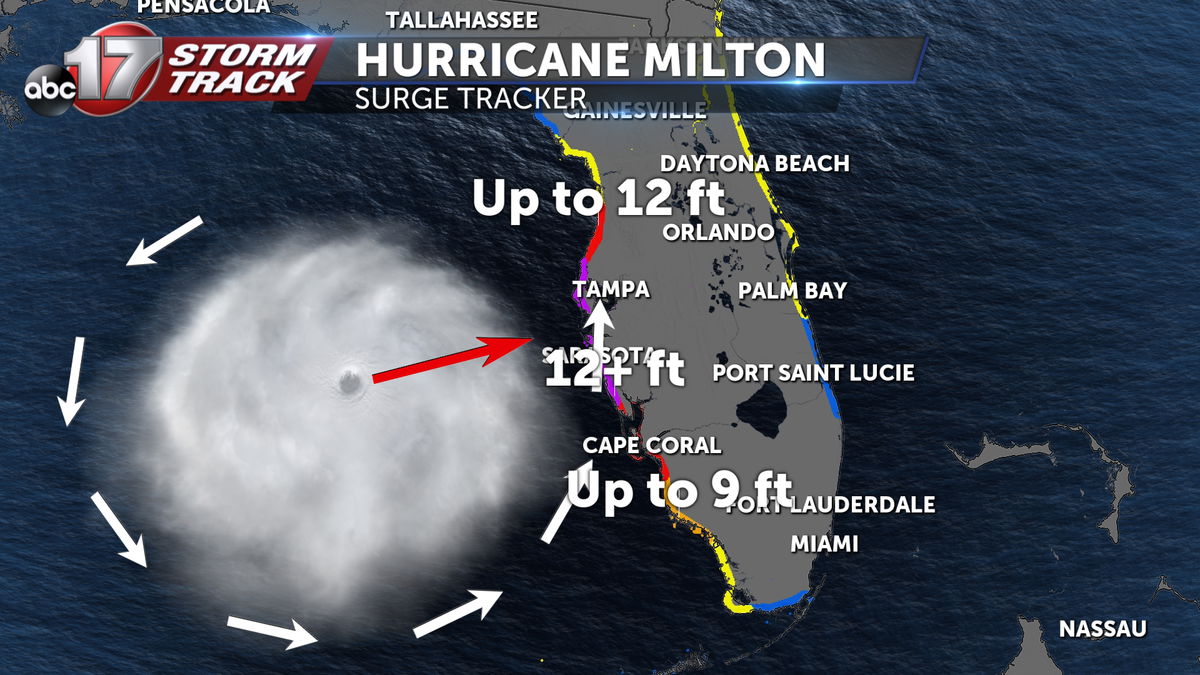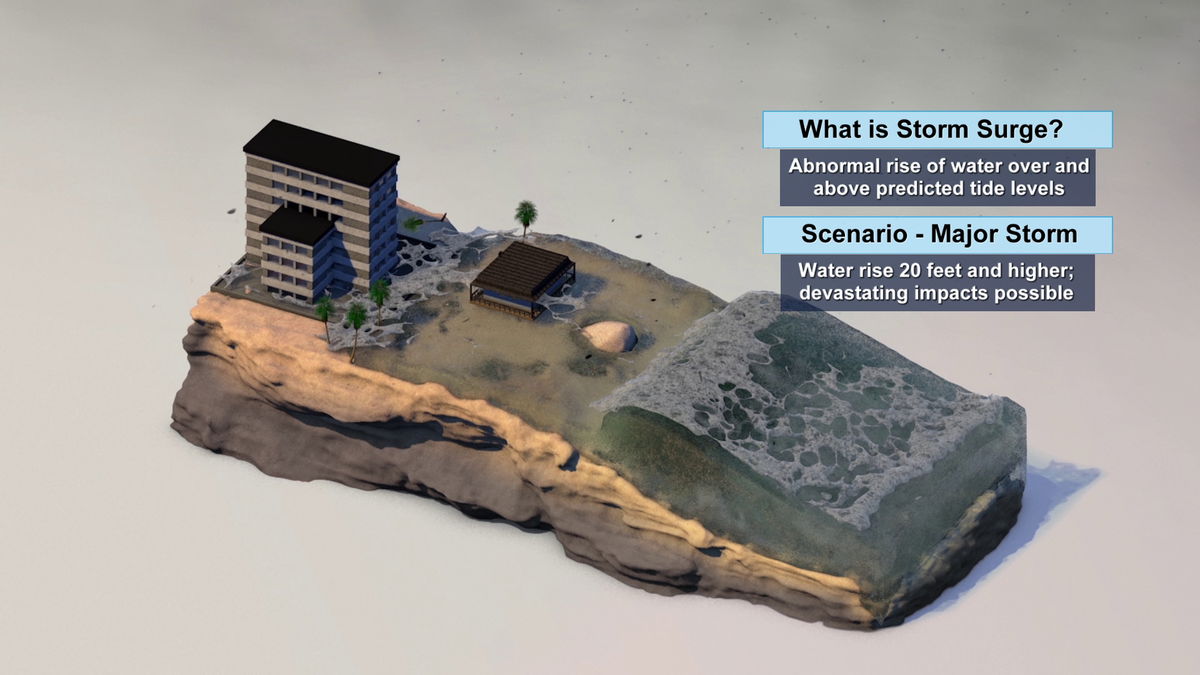What causes storm surges and updates on Hurricane Milton
As of 3:54 PM Hurricane Milton has once again strengthen to a category five hurricane with winds at 165 mph. Milton continues to move to the northeast just off of the Yucatan Peninsula after completing an eye-wall replacement. Hurricane Milton is forecast to hit the western coast of Florida as a major hurricane.

The central pressure of the hurricane is currently at 905 mb showing a strengthening trend. For a comparison, Helene reach a minimum central pressure of 938, making Milton a stronger hurricane.

Hurricane Milton looks to make landfall near Tampa Bay or just south late Wednesday night into Thursday morning.

The immediate threat posed by Milton to the western coast of Florida is the storm surge. A storm surge is caused by the winds pushing water form the ocean over the land causing flooding conditions.
There are multiple factors in determining the size of a storm surge. The first is the wind speeds of the storm. The higher the speeds, the more force there is to draw the water over land. The second is the location and movement of the tropical storm/ hurricane. Winds rotate counter-clockwise around storms in the northern hemisphere. This means if you were to draw arrows around the storm, you can effectively pinpoint the wind direction. When these arrows point inward towards land, then the area of greatest storm surge impacts is highlighted.

The final factor in determining the storm surge is the shore slope. Areas with a more gradual shallow slope towards the shore can see the storm surge make its way further on land and create higher surges. Areas with less of a gradual slope can act as surge breaks limiting the effectiveness for the storm surge to make its way further on land.
The current storm surge forecast are expected anywhere from 10-15 ft towards the Tampa Bay area, but the forecast for the exact location of landfall can very up to 70 miles meaning the area of greatest concern for a storm surge impact can shift further north or south.
